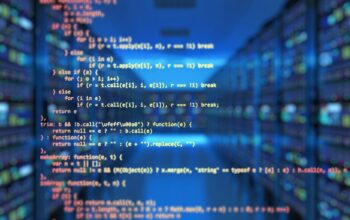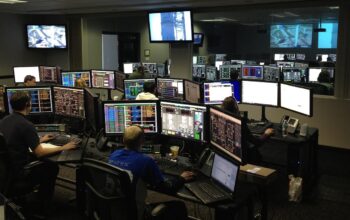Introduction to Cloud Services Hardware Trends
Imagine a world where data centers hum with efficiency, powered by advanced hardware designed to support cutting-edge cloud services. From AI-driven chips to optimized data storage systems, the field of cloud computing is undergoing a revolution that impacts businesses on a global scale. This article explores the top 5 trending hardware related to cloud services, making them more accessible, efficient, and powerful than ever before.
Trending Hardware Overview
The focus on enhancing cloud infrastructure is driven by the growing demand for AI applications, data analytics, and secure operations. Here are some of the key hardware trends shaping the future of cloud services:
- AI Chips for Data Centers and Cloud
AI chips, including GPUs (Graphics Processing Units) and custom ASICs (Application-Specific Integrated Circuits), are at the forefront of how data centers operate. These chips enable faster processing of AI models, enhancing the scalability and efficiency of AI tasks in the cloud. Companies like Google, Amazon, and Microsoft invest heavily in these technologies to support applications like face recognition, natural language processing, and predictive analytics.
Real-World Impact: For instance, companies using AI chips can train complex models faster, allowing them to innovate quicker. This is crucial for businesses relying on AI-driven cloud services to stay competitive.
- High-Performance Storage Systems
As data volumes grow, the need for high-performance storage systems increases. Technologies like NVMe (Non-Volatile Memory Express) and flash storage enable faster data access and processing, supporting demanding cloud applications. These systems are essential for cloud providers offering real-time analytics and data-intensive services.
Real-World Impact: Companies can now store and retrieve large amounts of data quickly, ensuring seamless operations for cloud-based services.
- Liquid Cooling Solutions
With the increasing energy consumption of AI hardware, liquid cooling is becoming more prevalent. This method allows data centers to operate more efficiently by reducing heat and increasing rack densities. It’s especially advantageous for hyperscalers building large-scale AI-capable data centers.
Real-World Impact: Liquid cooling helps companies like hyperscalers manage their environmental impact better while improving data center efficiency.
- AI-Optimized Servers
AI-optimized servers are designed to run AI applications more effectively. These servers typically contain specialized components like GPUs, CPUs, and memory architectures optimized for machine learning tasks. This trend is evident in Dell’s AI-optimized server offerings, which support complex AI computations.
Real-World Impact: For businesses focusing on AI development, these servers provide the computational power needed to deploy and train large models quickly and efficiently.
- Edge Computing Infrastructure
Edge computing brings data processing closer to where data is generated, reducing latency and improving real-time decision-making. Edge infrastructure typically includes specialized servers or devices capable of processing data at the edge without needing to communicate with a central cloud data center. This trend supports applications requiring low latency, such as IoT devices or autonomous vehicles.
Real-World Impact: Edge computing enables applications like smart cities or industrial automation to operate more efficiently by processing data locally and reducing reliance on centralized cloud infrastructure.
Cloud Services Ecosystem
These hardware trends are intertwined with broader movements in the cloud services ecosystem, such as increased emphasis on cybersecurity, sustainability, and scalability.
Key Players
Key players in the cloud services market, like Amazon Web Services (AWS), Microsoft Azure, and Google Cloud, are heavily investing in hardware innovations. These investments include advanced data centers equipped with AI chips and edge computing infrastructure to support demanding applications.
Conclusion
The advancements in cloud services hardware are not just about technical improvements; they represent a shift towards making cloud computing more accessible, powerful, and sustainable. As businesses continue to adapt to the digital age, understanding these trends is crucial for success in the cloud computing landscape.
References:
- https://cloudpso.com/the-10-cloud-trends-that-will-shape-2025s-digital-world/
- https://www.crn.com/news/software/2025/the-coolest-big-data-system-and-platform-companies-of-the-2025-big-data-100
- https://www.zco.com/blog/top-hardware-software-integration-trends-2025/
- https://firstcolo.net/en/future-of-data-centers-the-10-most-important-trends-for-2025/
- https://www.spglobal.com/market-intelligence/en/news-insights/research/cloud-price-quarterly-new-services-regions-and-prices-to-kick-off-the-year
- https://metapress.com/how-cloud-infrastructure-is-reshaping-modern-enterprises/
- https://cloudsecurityalliance.org/cloud-security-glossary
- https://www.idtechex.com/en/research-report/ai-chips-for-data-centers-and-cloud-2025-2035-technologies-market-forecasts/1095



